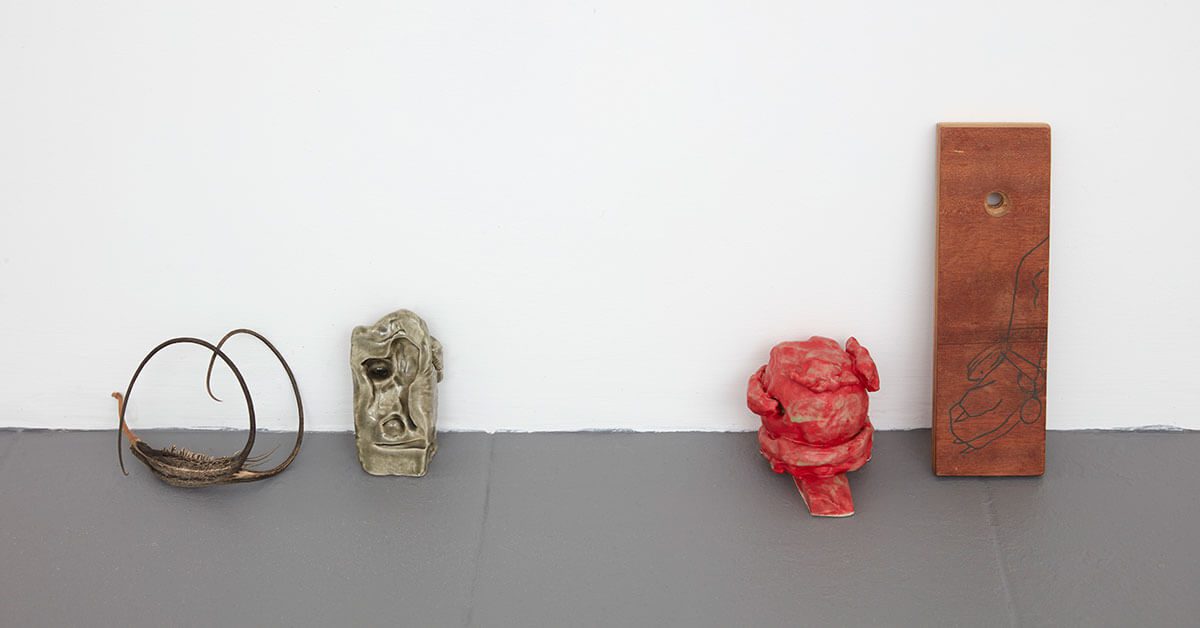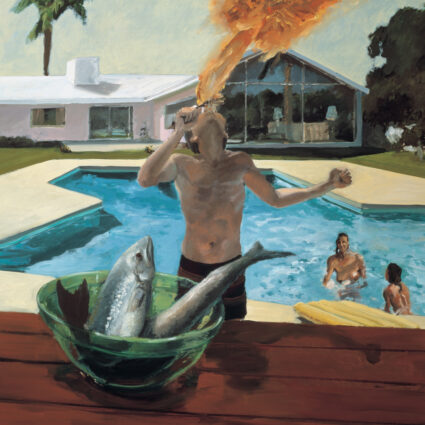Artist Catherine Czacki, based in Portales, NM, finds radical healing in making her art—objects, sculptures, paintings, talismans, and wall hangings from a variety of different materials—and enjoys the subversive side of indulging in material.

I met Catherine Czacki in a Zoom yoga class. The instructor was our mutual friend Linnea Vedder, an artist based in New York whom I’ve known since we were both high school exchange students in Germany twenty years ago. Participants in the class were scattered around the U.S., from New York to Wisconsin, to California.
“Oh, you two should know each other,” Linnea said to me and Catherine, “I think you live really close to each other.”
I live in Lubbock, Texas, out in the middle of the high plains, far from pretty much everything. Turns out, Catherine lives in Portales, New Mexico, a mere hundred miles away. That day, Linnea sent us both an email with the subject line “connections.” “What a wild coincidence that you both live so close and are so like-minded and interested in similar things!” she wrote.
The isolating effect of the pandemic, with our bodies sheltering in our respective domestic spaces, has conversely allowed us, in some cases, to reach out and intermix with others in virtual spaces while geographically dispersed. If there is one bright spot from the pandemic, for me, it is that I have been able to seek connections with old friends in far-flung places, and participate in or watch events such as artist’s talks and readings that I would not have been able to attend otherwise, in any capacity. These social spaces, performed virtually, intimate yet removed, are one way I have been able to push against the motivation-sucking crisis-mode-reaction of my everyday life and try to regain a sense of being here, being present, and still listening.
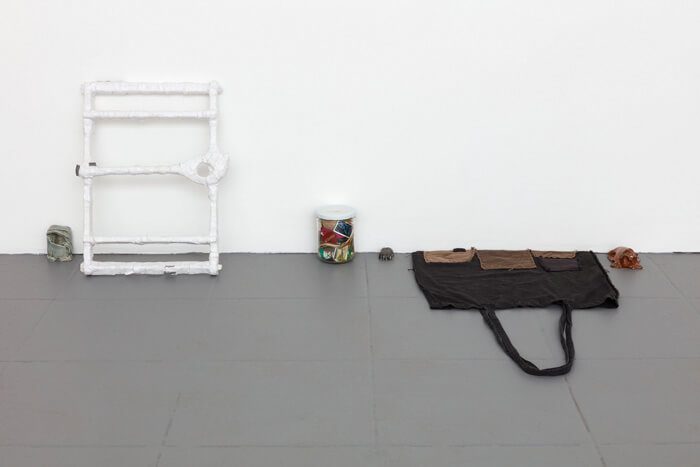
As Catherine and I talked in a virtual “studio visit,” the sun set and our respective rooms darkened, with only the glow from our laptops illuminating our faces. We traced the orbits of our mutual friends, between San Francisco, New York, San Diego, and now the Southwest and Llano Estacado region. We would have met eventually, that much is certain, but our meeting would not have had the same emotional tenor.
Czacki moved to Portales in 2019 to teach art history and ceramics studio classes at Eastern New Mexico University. She lives with a large and lovable, mischievous dog named Big Buddy. She makes objects, sculptures, paintings, talismans, and wall hangings from a variety of different materials—clay, fabric, beads, found objects—and writes poetry and sews clothes and plays music and works in her garden. These multifarious practices find their ways in and around her oeuvre.
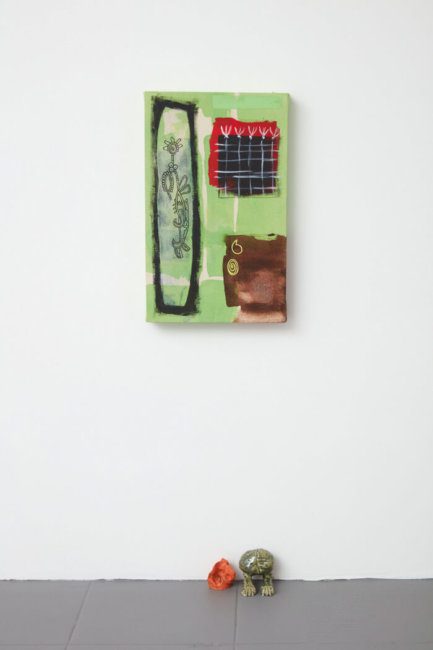
While the pandemic and the lockdowns hit many of us hard, coping with limitations and finding workarounds is a practice Czacki has honed over many years. “There have been so many times that I was going and going, and then suddenly everything fell apart and I just had to stop everything,” she says. “But going through it so many times, I know what to do.” Meditation, yoga, and other spiritual practices, and eating clean, healthy food are part of it, but the real trick is adaptability, switching tasks frequently, and finding ways to circumvent problems. Can’t type? Record with the voice. Right hand injured? Make a sculpture or play music with the left hand “and whatever comes out is the art.” “I think that is partly why my artwork is so idiosyncratic,” she says.
“There have been so many times that I was going and going, and then suddenly everything fell apart and I just had to stop everything. But going through it so many times, I know what to do.”
Czacki studied painting in undergraduate school at the San Francisco Art Institute, but soon switched to new genres, intending to focus on video and installation. At the time, she says, she wanted to make “big objects,” but it never really felt right. For many years she felt the pressure to “follow that bureaucratic hierarchical order” and “get really good at one thing,” as either a painter or a sculptor, or to go big-time contemporary artist-style and form a studio with hired assistants. None of this felt right. In grad school, at Columbia University in New York, a faculty member stated “We didn’t know if you were an outsider artist or a genius,” she reveals. “For a while I let it poison me, and then I gained my self-confidence back.” After New York, Czacki pursued a PhD in art history, theory, and criticism at the University of California, San Diego where she produced a dissertation that is part theory and art history, part experimental writing and poetry. Through all these experiences, as some of her peers abandoned object making in the name of Marxist critique, Czacki continued to be drawn to “the making impulse.” “I had read all the art history and theory, but what was missing was the making,” she says.
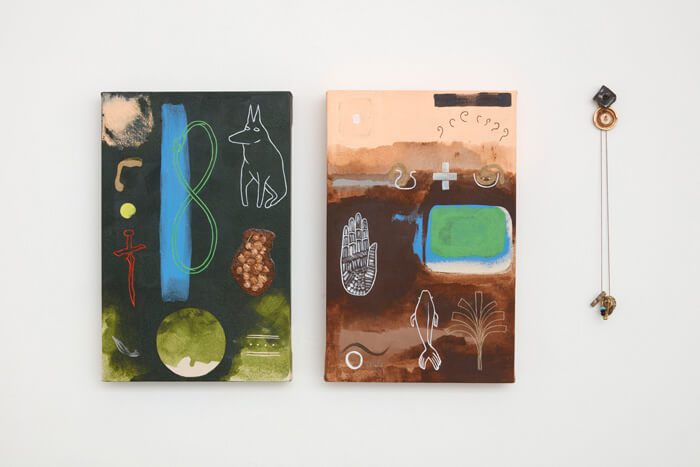
Returning to object making, and exploring craft, she felt she was accused of participating in “some kind of fetishism” with regards to material. “I did a lot of research on the idea of the fetish as a colonial concept,” she says. “This idea of us being separate from the material world has a lot to do with Cartesian dualism; it’s a very masculine and Western-centric concept of the world.” Western art history privileges history painting over craft, and hand-made ritual objects that existed outside of European aesthetics were denigrated as “fetishes” and eyed with suspicion. Contemporary art theory continues to support this negative view of the “fetish” with the primary means of discussing the value ascribed to objects as “commodities.” Czacki resists this ascribing of hierarchies of value as supporting entrenched institutional, bureaucratic powers. “How those things do and don’t get seen as serious art has a lot to do with people’s relationship to institutional power,” she claims.
“There’s something radically healing about making my own art, and taking the time, turning off my phone for a whole day and focusing on cooking a bunch of meals, making one or two ceramic objects and sewing a patch on a shirt,” she says. For Czacki, the pleasure of indulging in the material, the “beauty and magic” of making, has a subversive side. “I could have continued to launch a critique against Western art history and I still do feel that,” she says, “but in the work is that [critique] while also giving me the pleasure and the healing that I need.”
In her research, Czacki discovered a kind of ancestral link in her attraction to the handmade and her own family history, though she is wary of emphasis on biography. Czacki lived in Poland in her twenties and learned there were deeply complex and conflicting narratives to her family history. “A lot of what I’m doing feels recuperative,” she says. Her relations on the maternal side were farmers and quilters and exhibited a strong relationship to the land—something Czacki has returned to in some ways as well, in the form of growing her own food and creating artworks from leftover fabric and stolen beads (her mother has an impressive bead collection).
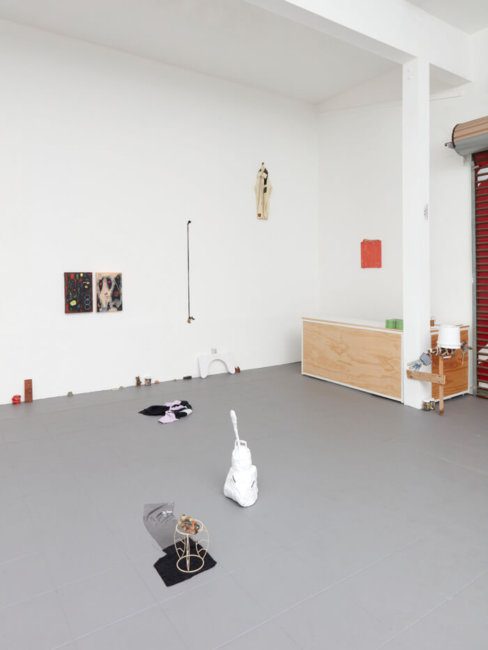
Czacki’s fabric works are created intuitively, sometimes suggesting clothing or referencing the body, sometimes taking the form of wall-hangings or tapestries. Her clay works range from the functional to the talismanic, including a whole series of what she calls her “demons.” “I’ll make them when I’m feeling frustrated,” she says, showing me a green-glazed clay object that fits in the palm of her hand. “When I was doing union organizing work I had my ‘union demon’; I had my ‘PhD demon,’ or my ‘person-I-was-dating-last-week demon,’ or ‘my-dog-ate-a-whole-bag-of-rice demon.’” The most planned works, she says, are the paintings, which start from a vision, a color, or a drawing. “I don’t have a hierarchy between the planned or the intuitive,” she notes. “I let myself flow. The art is the easy thing at this point.”
For Czacki, the pleasure of indulging in the material, the “beauty and magic” of making, has a subversive side.
This flow continues through Czacki’s practice in poetry and music. “My poems are telling people verbal information about the art that’s not didactic or narrative or essayistic,” she notes. “It’s pretty simplified and it’s on purpose. I want it to be about a sort of resonance with the material world that I’m trying to have.” The poetry contains an anticolonial endeavor as well: in her dissertation, she references Audre Lorde in how poetry strives for an “irreducible form of knowledge,” and Aimé Césaire, that “Poetic knowledge is born in the great silence of scientific knowledge.” Czacki recently published a 310-page book of poetry and images, entitled Creosote, with Line Script Diary Press, in collaboration with editor Adrienne Garbini.
Czacki is currently collaborating on an album of sounds with Andrew Weathers and Gretchen Korsmo of Full Spectrum Records, based in Littlefield, Texas—between Lubbock and Portales—who are more mutual friends between us (since 2019, Andrew and Gretchen have curated an experimental concert series at the gallery I co-founded in Lubbock). She met them by playing in the Llano Estacado Monad Band (LEMB), which bills itself as a “decentralized, asynchronous, collective, free” improvisational group, and discovered they all had friends in common from San Diego. “This is not uncommon in my life,” she says. “With a lot of my collaborators we will circle around each other in life, and then find a resonance. Collaboration is like everything else in my practice, I end up in a space and a time and a moment where you’re just around certain people and it makes sense.” The limitations of digital collaboration offer another opportunity to discover workarounds and circumventions. Since the pandemic began, LEMB has produced several improvisational pieces performed and recorded via Skype, as well as a couple of socially distant concerts. “I have learned to forgive the digital,” she says. “We’re all having this existential moment where we are learning the limits of the digital while at the same time we have to allow ourselves to let it be what we need.”
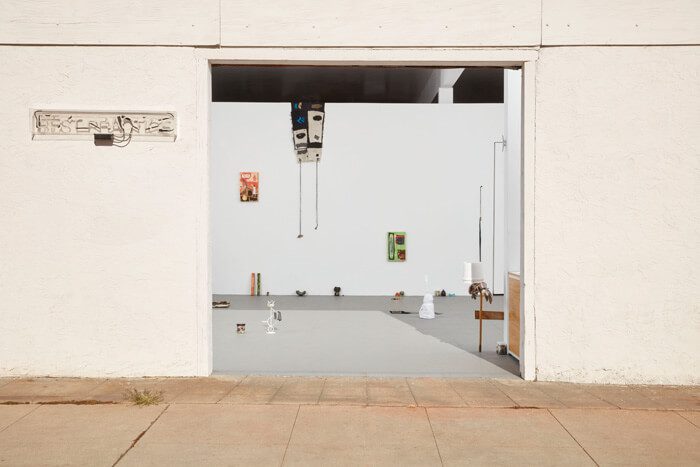
The real isolation Czacki felt after her move to Portales became a reality for most of us as we entered this age of social distancing. Czacki evocatively describes her dispersed social world as a “gummy tendrilled support network” or a “forcefield” of people scattered around the world that she can draw on for support. “These ways that we have these spread-out networks—this softness, these reserves—that we have to touch base with,” she gestures with her fingers inching forward. “At this moment we are feeling disjuncted in a lot of ways, so we are reconnecting with people that we’ve gathered along the way.” She adds, “If at any point in life we can take a positive view of something, it’s important, because life is shit and life is hard.”
As we talked, Czacki’s words struck chords of wisdom. Slowing down, pursuing contentment in everyday tasks, focusing on art every day, remaining optimistic—all are ways she has found to “deal with all the pain and trauma in life.” Everyday things become spiritual groundings—“write a poem, make a sculpture, do the wash.” Repeat, rotate, switch tasks. Work with the material, and find pleasure in it.
